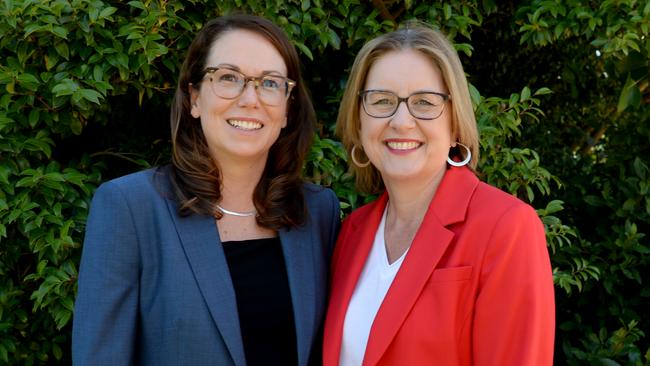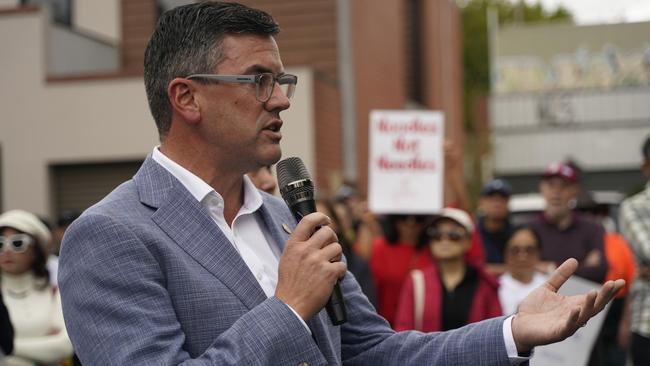Back in black, just; Victoria’s $600m surplus
A $600m budget surplus will be unveiled on Tuesday – almost $1b smaller than originally forecast while debt will continue soaring towards $200bn.

Victoria will post a modest $600m surplus on Tuesday when Treasurer Jaclyn Symes unveils the state’s first “back in the black” budget since the pandemic.
While the surplus is $900m lower than last year’s original forecast and debt will soar towards $200bn throwing a dark cloud over the state’s economy, the return to an operating surplus is being hailed by the Treasurer and Jacinta Allan.
The Premier described the 2025-26 budget as responsible and said net debt as a share of the economy would reduce over coming budgets. “We are delivering the first budget surplus since the pandemic,” she said.
“Victorians want a responsible budget that sets up our state for the future, they want real help to ease the cost of living right now.”
Leading economists questioned whether Labor could afford its $318m plan, announced on Sunday, to give children free rides on trains, trams and buses.
Judo Bank economic adviser Warren Hogan questioned whether the state could afford the measure and whether they would lead to increased taxes.
“I’m sure there’s a nice rationale, be it an economic or a social one, but the issue I would have thought for Victoria, which has probably some of the weakest government finances of any of the governments of Australia, is can they afford to be doing this or is there going to be some sort of offset in the budget next week, i.e. are they looking to raise taxes?” Mr Hogan said.
Ms Symes, who will deliver her first budget on Tuesday, has confirmed the budget will be $600m in surplus and forecast operating surpluses of $1.9bn in 2026-27 and $2.4bn in 2027-28. Last December, the government forecast a $1.5b surplus for 2025-26.
Ms Allan did not specify how her government – which is forecast to hit net debt of $187.3bn by June 2028 – would fund the budget sweeteners but insisted it was making “responsible decisions” in line with its fiscal strategy, which includes achieving an operating surplus, stabilising and then reducing net debt.
Independent economist Saul Eslake said for a government that ought to be aiming for a cash surplus, $320m was “a lot of money to be throwing around, however worthy the objective might be”.
“It’s not the sort of thing I would have expected a government under significant financial pressure, at risk of having its credit rating downgraded again, it’s not what I would have expected a government in that position to be doing,” Mr Eslake said.
“What they ought to be charting is a credible path back to a cash surplus, say by 2028-29.”
Independent economist Chris Richardson said while it was important to make public transport affordable, it was “absolutely not the first priority for a government … struggling with its finances”.
Opposition Leader Brad Battin echoed the economists’ concerns and said the cash splash was “irresponsible”.
“Anything that supports the cost-of-living crisis in our state is always going to be something that many families would welcome … but you can’t do this at the expense of putting a tax on every single household, every single business, every single farmer,” Mr Battin said.
“Money doesn’t grow on trees, and nothing’s for free.
“It comes out of the pockets of hard working people here in Victoria.”

S&P Global Ratings last week warned that the state risked another credit rating downgrade should it fail to show “fiscal discipline”.
“What we will be looking for in the next budget is the state’s commitment to controlling operating costs and stabilising debt levels,” Rebecca Hrvatin, an analyst at S&P Global Ratings, said on Thursday.
S&P Global has said there was a “real risk” of cost blowouts on the Allan government’s unfunded Suburban Rail Loop project and that without further federal government funding, this could put downward pressure on the state AA credit rating, two notches below the premium triple-A level.
“We believe there’s a real risk the SRL may cost more than the latest government forecasts, given the size and complexities of the undertaking and the state’s recent history of major projects going well over budget,” Ms Hrvatin said.
“Further, if Victoria pushes ahead with suburban rail loop without additional federal government funding, the state’s fiscal outlook may weaken, further eroding its credit standing.”
Ms Symes said the budget net debt as a share of the economy would begin to decline after peaking in 2026-27, and keep falling beyond that.
“By delivering a responsible budget, we can invest more in what matters most to Victorian families,” Ms Symes said.
“This is just the beginning. From here, net debt will continue to fall as a share of the economy, and we will see continued surpluses in the years to come – allowing us to continue to provide services and infrastructure that Victorians need.”



To join the conversation, please log in. Don't have an account? Register
Join the conversation, you are commenting as Logout